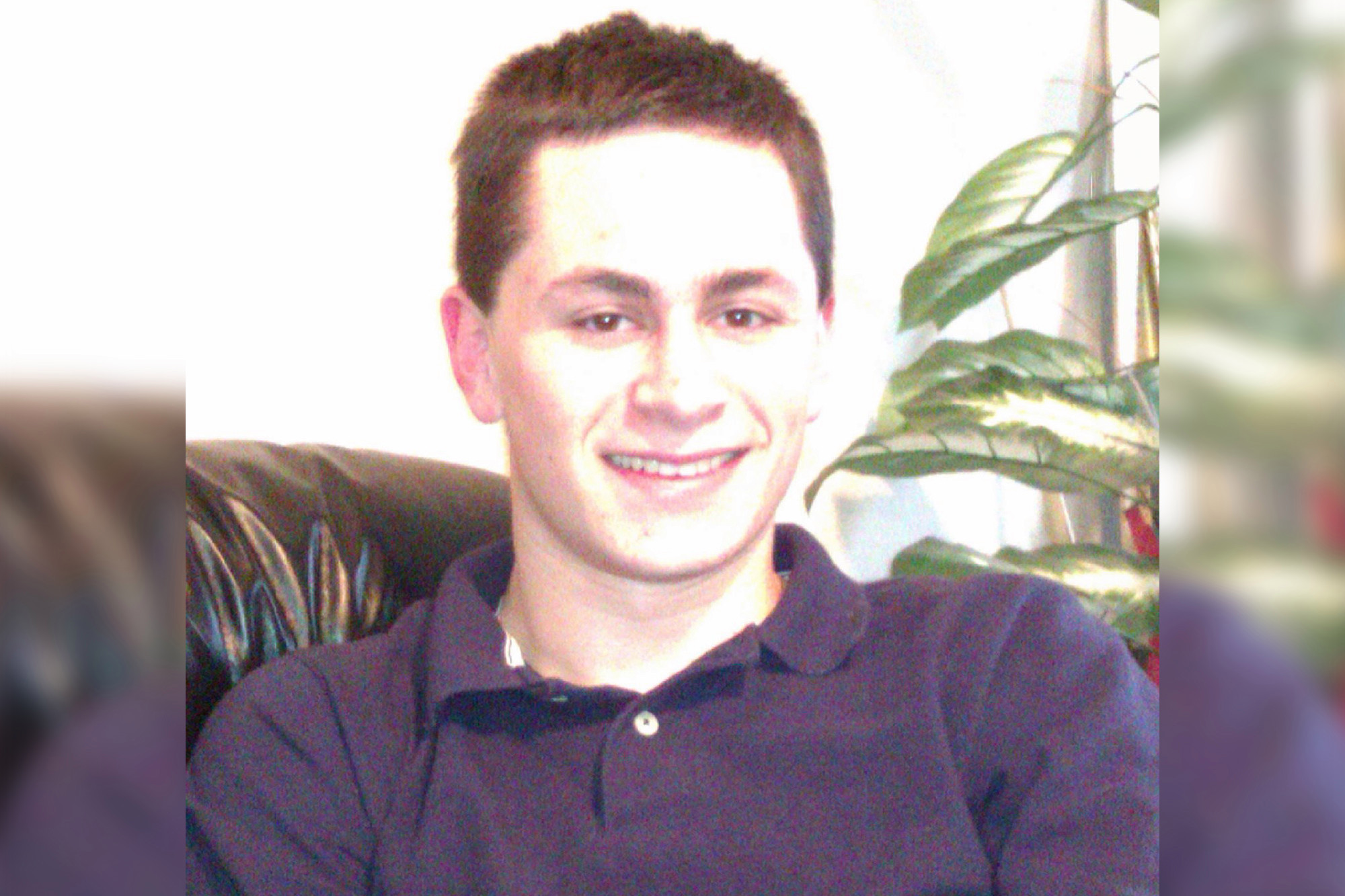
By Kristine Phillips, Mark Berman, Meagan Flynn and Eva Ruth Moravec
ROUND ROCK, Tex. — The suspected serial bomber who terrorized Austin with a string of exploding packages died early Wednesday after detonating an explosive device in his vehicle as police closed in on him, authorities said.
Austin police and the FBI tracked him to a hotel parking lot in Round Rock, about 18 miles north of Austin, where they found him inside his vehicle, Interim Austin Police Chief Brian Manley said. Officers wanted to wait for tactical units to arrive before engaging the suspect, but he started to drive away.
The man stopped on the side of the Interstate 35 frontage road, and as Austin SWAT officers approached, he detonated a bomb, knocking one of the officers backward and injuring him, Manley said.
Stories that will be the talk of the morning.
A SWAT officer then fired at the suspect, who died inside the vehicle, the police chief said. It was unclear whether he died from the explosion or from gunfire. Manley said the suspect sustained “significant” injuries from the blast.
Law enforcement officials on Wednesday identified the suspected bomber as Mark Anthony Conditt, 23, of Pflugerville, Tex.
Authorities said Wednesday they had filed a federal complaint and obtained an arrest warrant for Conditt on Tuesday night, not long before he died. He was charged with one count of unlawful possession and transfer of a destructive device, according to federal court documents. The complaint affidavit against Conditt remains under seal, but a cover sheet showed that it dealt with charges from March 2 through March 20, the period during which bombs exploded in Austin and outside San Antonio.

In announcing Conditt’s death early Wednesday, authorities warned that he may have left additional explosives behind and urged residents of Austin and the surrounding communities to remain vigilant after a bombing campaign that has lasted for nearly three weeks.
“We are concerned that there may be other packages that are still out there,” said Christopher Combs, special agent in charge of the FBI’s San Antonio office.
Austin Mayor Steve Adler said his city was breathing a sigh of relief after multiple days of terror.
“They are confident that they have someone who has been responsible for these bombs going off,” he said on the “Today” show. “As a community we’re just really relieved and just incredibly thankful for this army of law enforcement that has been in our community here for the last week or so.”
News of the suspect’s death came after investigators spent days struggling to explain the bombs that had detonated in Central Texas since March 2, a series of blasts that killed two people in Austin, injured four others and frightened the region. That tension remained Wednesday, even after police said the suspect was dead.
[ Two explosive packages were found Tuesday. One detonated at a FedEx facility. ]
“We don’t know if there are any other bombs out there and if so, how many and where they may be,” Texas Gov. Greg Abbott (R) said Wednesday morning on “Fox and Friends.” “Because this individual, either by mail or by placement or whatever the case may be, may have put other bombs out there.”
The Austin police on Wednesday asked people to remain vigilant for anything that appears suspicious and call 911 rather than touching or trying to handle things themselves.
Manley said police believe that the same bomber was responsible for all five explosions — four in Austin and one at a FedEx facility in Schertz, Tex. — and authorities were now investigating whether he had any accomplices. What may have motivated the bombings, Manley said, also remained unknown.
“That’s the one thing we don’t have right now, is a motive behind this,” Manley said. “We do not understand what motivated him to do what he did, and that will also be part of the continuing investigation as we try to learn more about him.”
Little was immediately known about Conditt in the hours after police said he was killed. Condit attended Austin Community College between 2010 and 2012, but did not graduate, according to the school. A spokeswoman for the school declined to answer questions about Conditt’s time there and whether he had any disciplinary issues, saying they were working with the Austin Police Department to offer “any information they need.”
The usually sleepy residential streets in Pflugerville, a small city northeast of Austin, were crowded with police and media vehicles Wednesday morning after news emerged that Conditt may have lived there, while officials closed down multiple streets in the area.
After a string of explosions in the Austin area, residents are on edge and are taking extra precautions.(The Washington Post)
On Wednesday morning, officers in tactical gear descended on the three-story home owned by the Conditts and smashed one of the house’s windows. An officer with a megaphone yelled that the FBI was there with a search warrant, said Mark Roessler, 57, a neighbor. A young man came out of the house, and he was placed in handcuffs and then led into an unmarked SUV; his identity was not immediately clear.
Austin police said Wednesday afternoon that investigators had detained the bombing suspect’s two roommates. One was questioned and then released, while the other was still being questioned in early Wednesday afternoon. Neither person was identified, police said, and they were not placed under arrest.
Roessler said the Conditts bought their home about two years ago and Mark Conditt began to remodel it with his father before moving in. Roessler said he did not speak much with Conditt, describing him as quiet, but said his father appeared to be a friendly, doting dad. During the renovations, Roessler had been inside the house, and on Wednesday morning he said FBI agents asked him to draw a sketch of the home’s interior while authorities prepared to go inside.
Manley said the information leading police to Conditt came together over the past 24 to 36 hours through surveillance videos and witnesses, who provided tips about his vehicle.
Frank de la Fuente, who was staying at a Red Roof Inn on Highway 35, said he heard an explosion at about 3:30 a.m. followed by two gunshots.
The explosion, witnesses said, happened next door, outside another hotel.
“He blew himself up down here,” Jeremy Lowe said at the Red Roof Inn, pointing in the direction of the WoodSpring Suites. “They shut down the highway and told everybody to not go anywhere.”
Early Tuesday, the investigation into the bombings expanded after a package exploded at the FedEx facility in Schertz. FedEx said the same person who shipped that package had sent a second one, which federal officials located at one of the company’s facilities in Austin near the city’s airport.
Federal officials and police said this second package “contained an explosive device [that] was disrupted by law enforcement. No injuries were reported.” FedEx said it had given investigators “extensive evidence” about those packages as well as the person who shipped them.
Adler, the Austin mayor, said the bomber’s use of the FedEx system “was very helpful.” Previously, Adler had said that the more bombings that occurred, the more evidence there would be for investigators. “That proved to be the case,” he said early Wednesday.
Police returned to the same FedEx facility near Austin’s airport on Wednesday morning for what they described as “a follow-up regarding a suspicious package,” though they did not say if that meant a new package or the one recovered a day earlier. The building was temporarily evacuated, but it was quickly secured and cleared, officials said.
Police called the attacker a “serial bomber” who had been showing increasing sophistication and skill as the bombings continued. This blast in Schertz was the latest sign that whoever was responsible for the explosions was capable of shifting tactics, an unusual trait for such an attacker.
The bomber “is not stupid. He’s being diversified in his methods and attacks, and may have done this before somewhere,’’ Malcolm Brady, a retired explosives investigator at the Bureau of Alcohol, Tobacco, Firearms and Explosives, said Tuesday. But each new device — and delivery method — offered new potential leads, such as business records, video or other evidence.
[ Austin bombings and the explosive echoes of the Unabomber ]
The bombings began with three packages placed at people’s homes in east Austin, then shifted to a tripwire-enabled device left along a residential street in another part of the city. After that came the pair of packages sent through FedEx — including one that exploded on a conveyor belt — as whoever was responsible apparently turned instead to a delivery company.
That package that exploded at the FedEx facility was sent from Austin to Austin, officials said.
The investigation’s focus remained on the Texas capital, where the previous four explosions had occurred between March 2 and March 18. The first explosion killed Anthony Stephan House, 39, when a bomb detonated at his home on March 2. Ten days later, another explosion killed Draylen Mason, a college-bound 17-year-old known for his passion for music. That blast also injured Mason’s mother.
These explosions prompted speculation that the victims were targeted because of their family connections: House’s stepfather, is friends with Mason’s grandfather Norman, and both are prominent fixtures at a local black church. Authorities also said they were considering whether the bombings could be motivated by racial hatred.
Hours after Mason was killed, another explosion seriously injured Esperanza Herrera, a 75-year-old woman visiting her elderly mother’s house. Investigators believed that package was addressed to someone else and detonated while Herrera was carrying it, according to people familiar with the case.
On Sunday, two men — both in their early 20s — were injured just hours after police made a plea for the bomber to come forward to speak to authorities. Rather than being left at someone’s home, that package was on the side of the road, rigged with a tripwire and anchored to a for-sale sign. When it detonated in an affluent part of southwest Austin, the two men were taken to the hospital with serious injuries.
Police and experts have pointed to the change in tactics as suggesting the proficiency of whoever was responsible.
“That bomb was very different from the other three,” Manley, the interim police chief, told the city council. “The first three appeared to be targeting a specific residence, resident address. And whether they were targeting the person at that address or not, we know they were placed on a specific doorstep at a specific home.”
The device Sunday night, meanwhile, was seemingly intended to detonate at random, ratcheting up the fear in a city already unnerved by the package explosions. Police said Tuesday morning that they had received more than 1,200 calls about suspicious packages since March 12, the day two bombs detonated; one-third of the calls came in between Monday morning and Tuesday morning.
President Trump cheered the fate of the suspect in a tweet early Wednesday, saying, “AUSTIN BOMBING SUSPECT IS DEAD. Great job by law enforcement and all concerned!”
A series of bombings in Austin have killed two. It’s not the first time a series of seemingly random attacks has terrorized a U.S. community. (Victoria Walker/The Washington Post)
Moravec reported from Austin. Berman and Flynn reported from Washington. Devlin Barrett, Julie Tate and Alice Crites contributed to this report, which has been updated.











